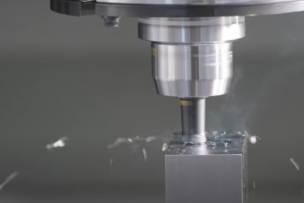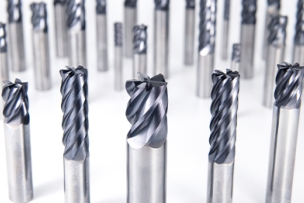“If we look at regular landing gear on a winged aircraft, you’ve got bearings in tires, wheels, brakes, etc.,” Giardiniere says. “These have to survive in a wide range of temperatures—moving from 30 or 40 degrees below zero at cruising altitude to impact, where they quickly reach their highest temperature while moving at high speed.”
As engines and airplanes get lighter, faster and more fuel-efficient, the operating temperature of engines continues to rise.
“Materials are being refined to operate in an ever-increasing temperature environment,” he says. “We’re talking bearings rated to operate close to 900 or more degrees Fahrenheit on a continual basis, which is extremely hot for that bearing to keep on working and doing its job.”
In addition to the enormous temperature stresses, aerospace bearings also need to resist corrosion.
“Just think of a Navy helicopter or other aircraft operating where their components are exposed to saltwater and salt air along with all the other issues including wind, rain, dust, heat and cold,” Giardiniere says.
How Aerospace Bearings Are Manufactured
“The need to meet these exacting requirements with such high reliability drives all aspects of bearing manufacturing to be as perfect as possible—from specialized materials to the processes used to create them,” Giardiniere says. (See sidebar for a description of the various aerospace bearing materials.)
Manufacturing a precision bearing for aerospace starts with an initial roughing operation with a strong carbide tool. Next, a bearing is sent for a heat-treating process to be either through-hardened or case-hardened. A machinist then works the surfaces close to a final shape, before either hard turning or finish grinding the assembly.
As the bearing moves through these different phases, a variety of inserts and abrasives may be required. “With such a diversity of bearing materials and hardness conditions, you need a full arsenal of cutting tools to profitably and efficiently manufacture them,” Giardiniere says.
The softer materials can be cut with a coated carbide, either CVD or PVD. Harder materials, such as heat-resistant superalloys, create high temperatures when cut. To maintain cutting efficiency on HRSA bearings, “we use ceramic and polycrystalline cubic boron nitride (PCBN) inserts, which can take the heat,” Giardiniere says.
For machining HRSAs, Rick Crabtree, an industry specialist at Sandvik Coromant, recommends using ceramic end mills for the roughing stages because they can handle the heat, though they break down a little quicker, making the initial form less accurate. He advises switching to advanced materials such as PCBN for the insert, to cut the form of a bearing radius more accurately.
 Do you need a technical question answered? Ask the MSC Metalworking Tech Team in our Machining Forum.
Do you need a technical question answered? Ask the MSC Metalworking Tech Team in our Machining Forum.
Specialized Tools and Techniques When Machining Bearings
In this high-heat, high-stress machining environment, special tooling techniques can preserve an insert’s accuracy for as long as possible, saving both time and money, while maintaining tolerances.
“These parts are so precise that the tolerance for a ball-bearing raceway is about one-third the diameter of a hair,” Crabtree says. “The form of the race has to be almost perfectly round or it will wear on one side or the other.”
A machinist cannot straight plunge a half-inch bearing raceway with a half-inch tool, he explains, because the insert will not perform perfectly.
“We recommend using a trochoidal turning technique, starting at one edge of the race and machining all the way around with a smaller tool—maybe a quarter-inch tool to make a half-inch radius,” Crabtree says.








Talk to Us!
Leave a reply
Your email address will not be published. Required fields are marked *